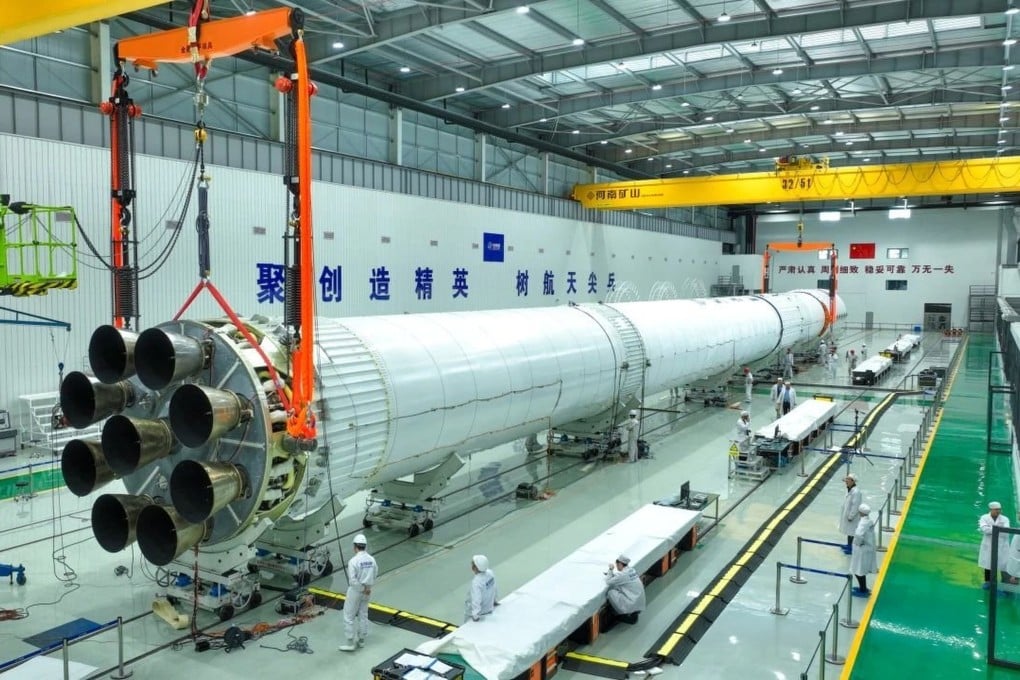China’s Tianlong-3 rocket passes critical stress test a year after explosive mishap
Space Pioneer unveils plan to allow ordinary people to ‘take a rocket like they take a plane, making global one-hour travel possible’

In a recent ground-based test in central China, the company used the rocket’s nine-engine first stage – which produces nearly 900 tonnes of thrust combined – to simulate key mission phases, including fuelling, lift-off, flight and recovery.
The structure held up under all test conditions, the company said on its social media account on Friday.
On June 30 last year, the company conducted a static-fire test with the first stage of its new Tianlong-3 rocket in Gongyi, a city of about 800,000 people in Henan province.
The rocket was supposed to remain anchored during the test, but instead lifted off unexpectedly and crashed in a hilly area nearby, creating a massive fireball that was captured on video by onlookers.
Space Pioneer said the rocket’s tail section – where all nine engines are mounted – must endure enormous stress during ignition. It also has to handle a wide range of forces throughout the mission, from standing upright in high winds and bearing the rocket’s full weight to the shaking and bending of ascent, and the impact of landing during reuse.
